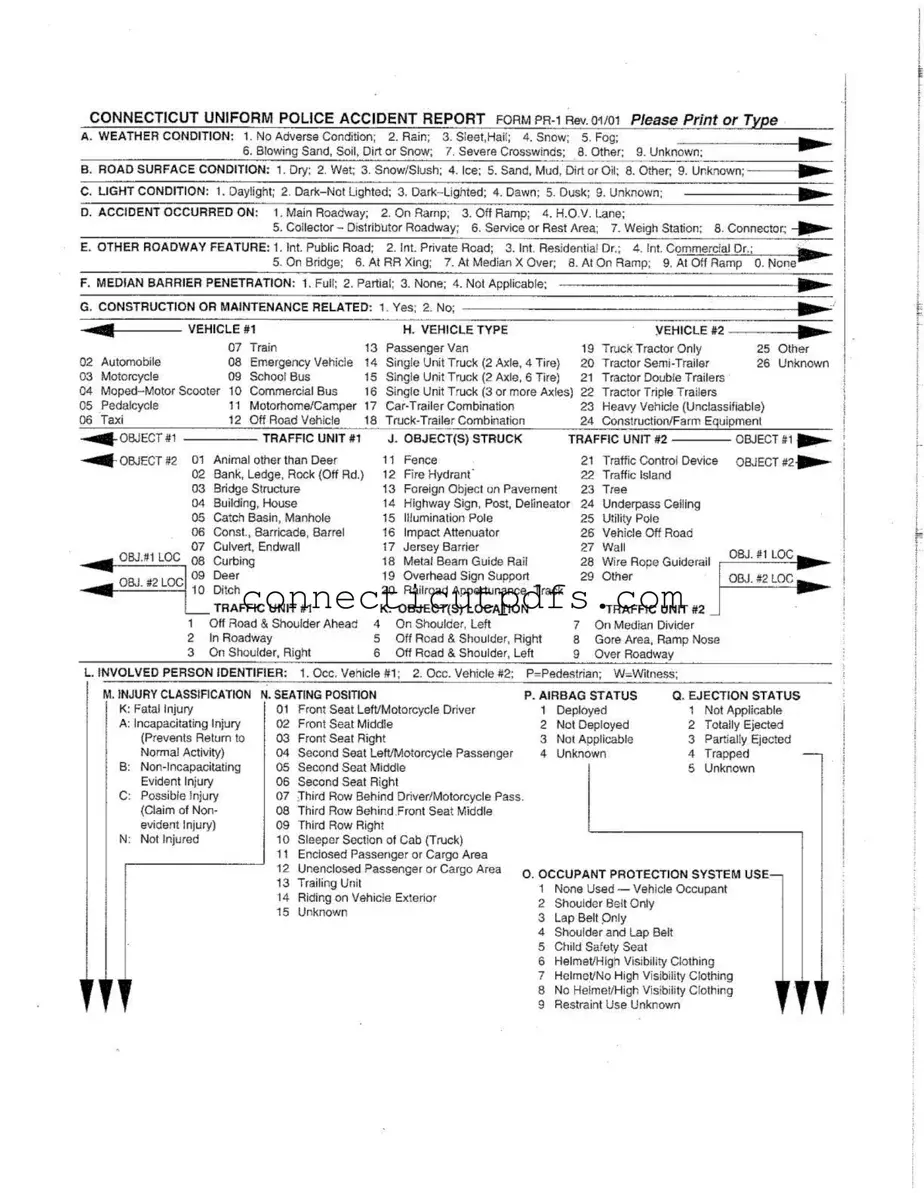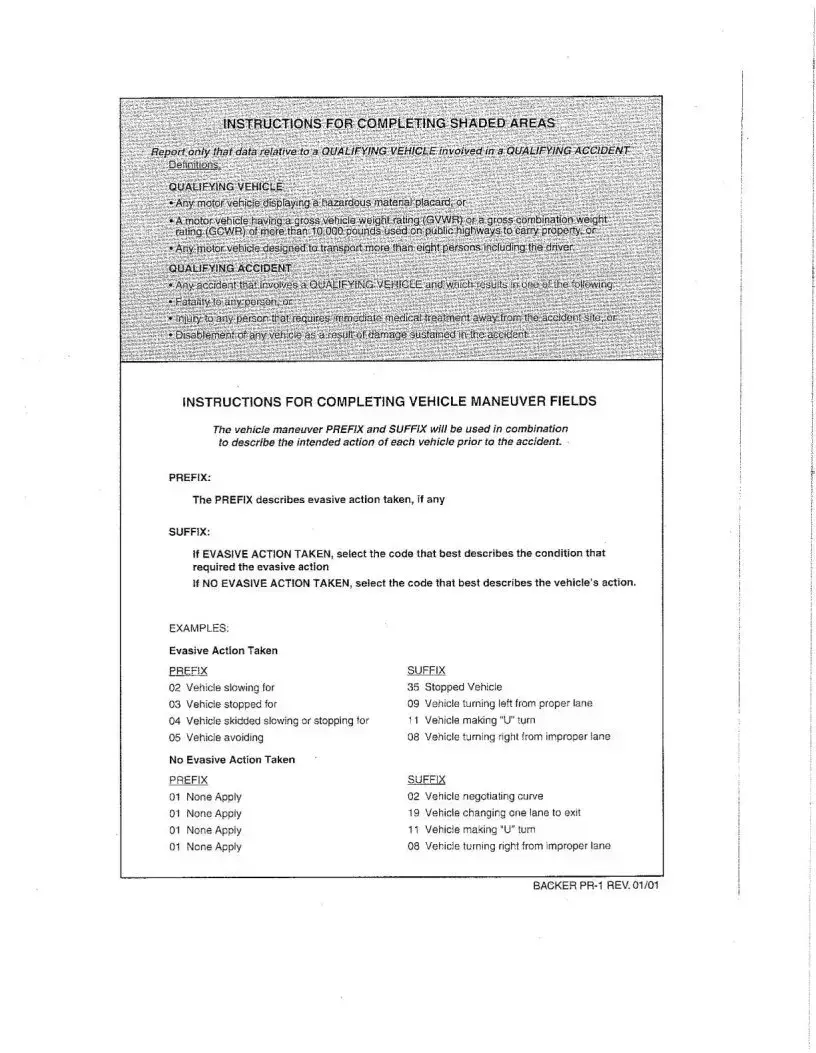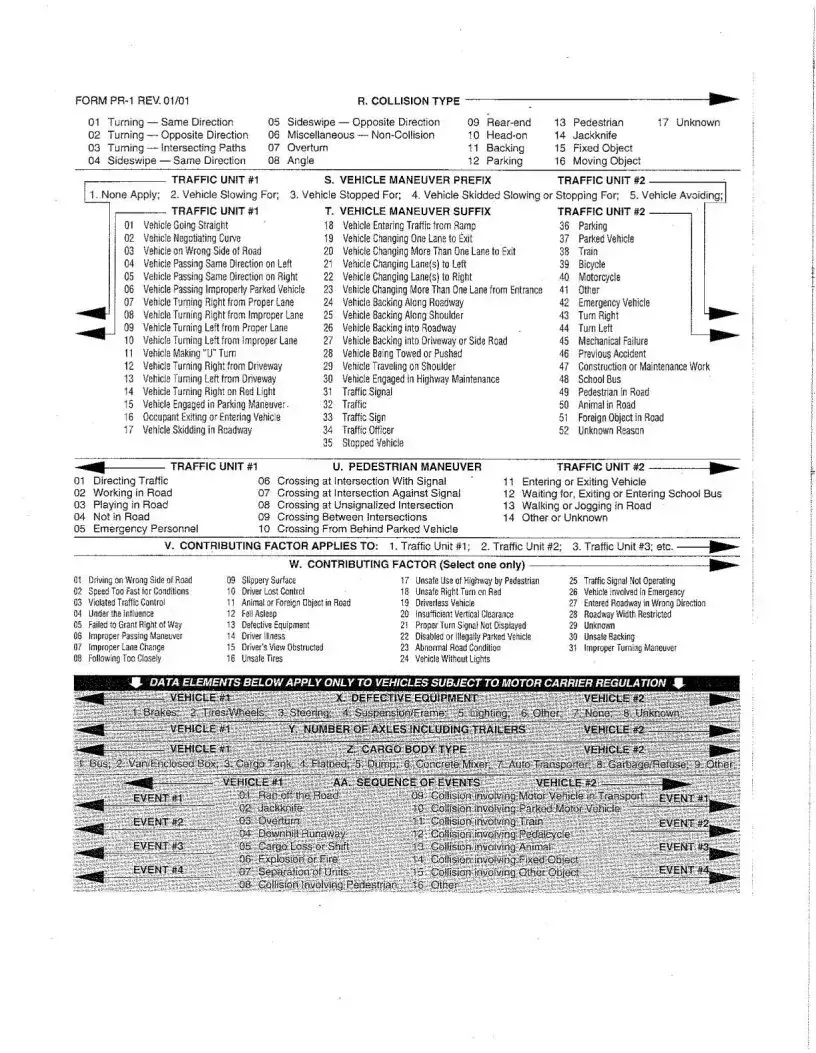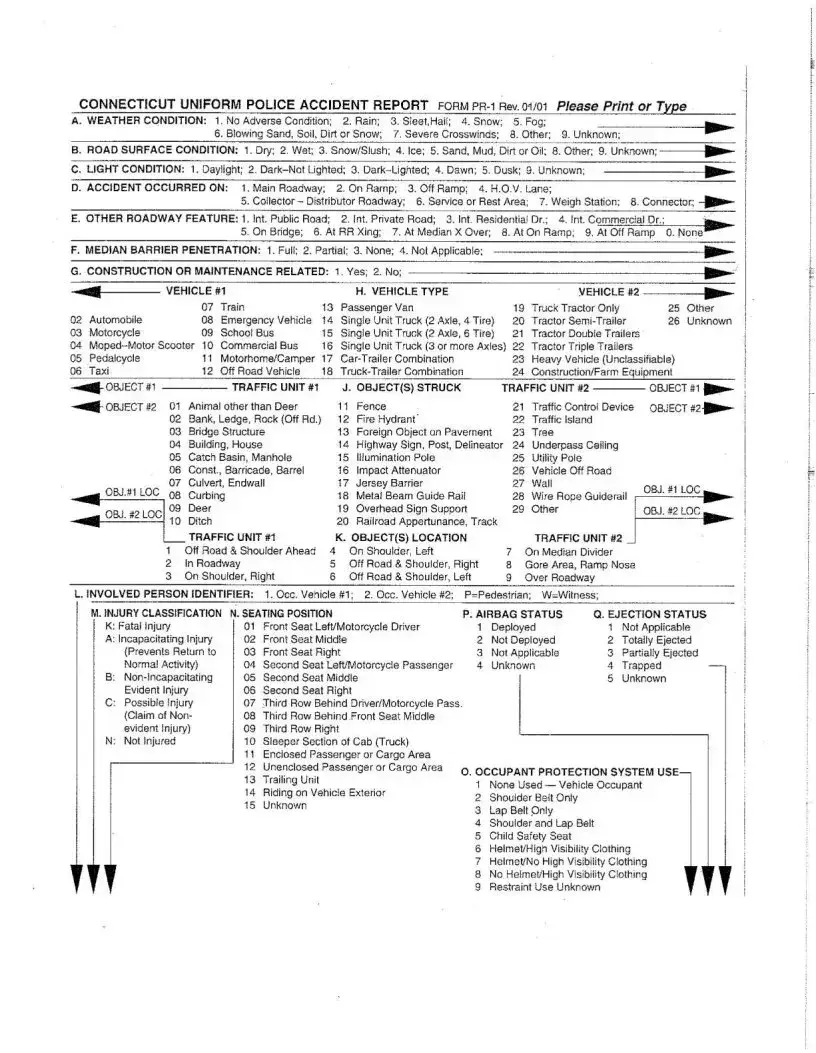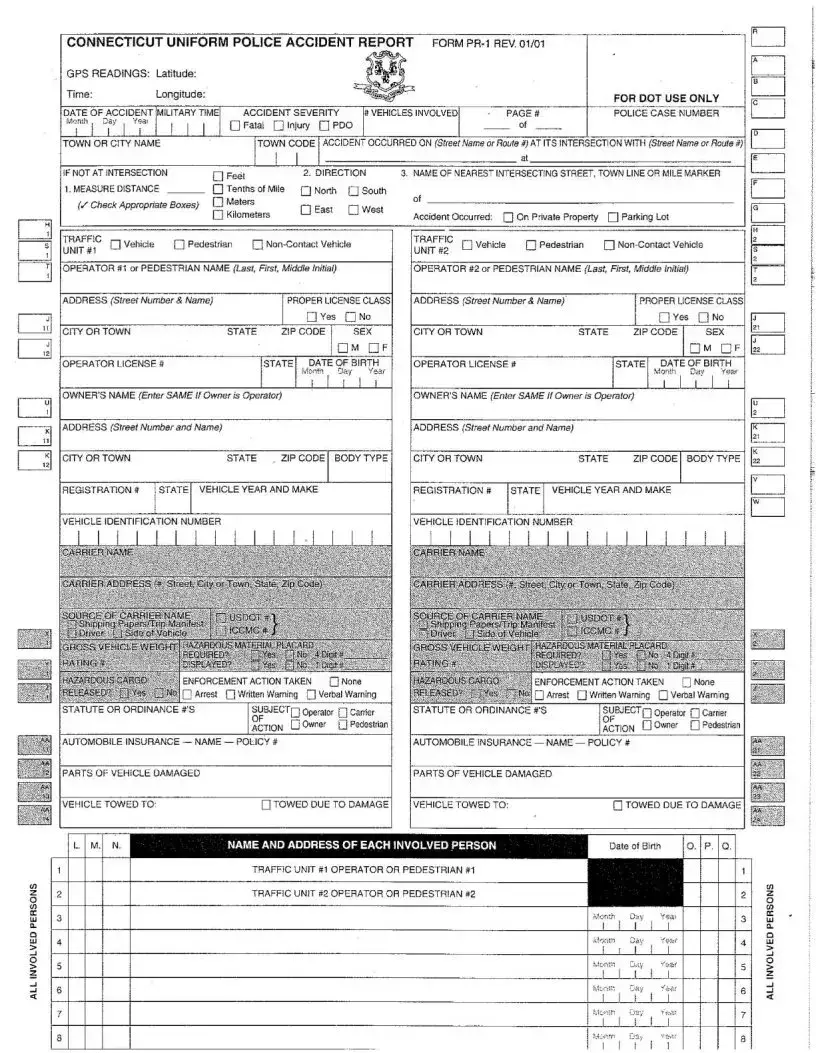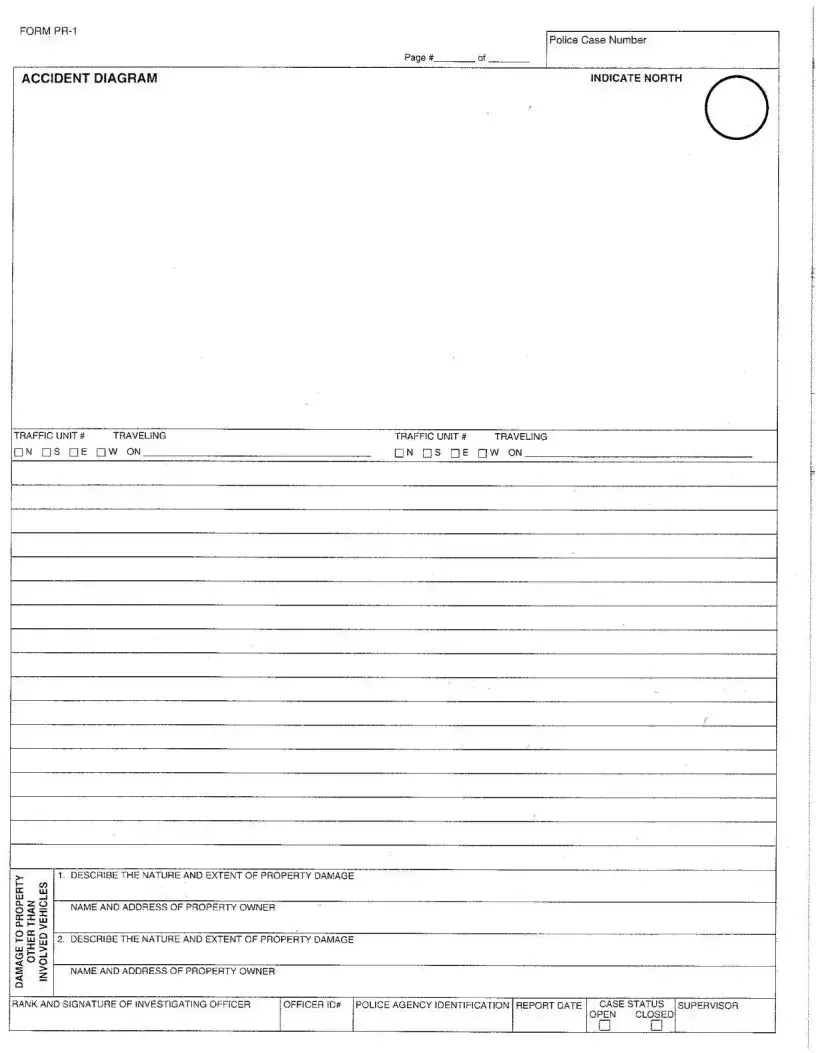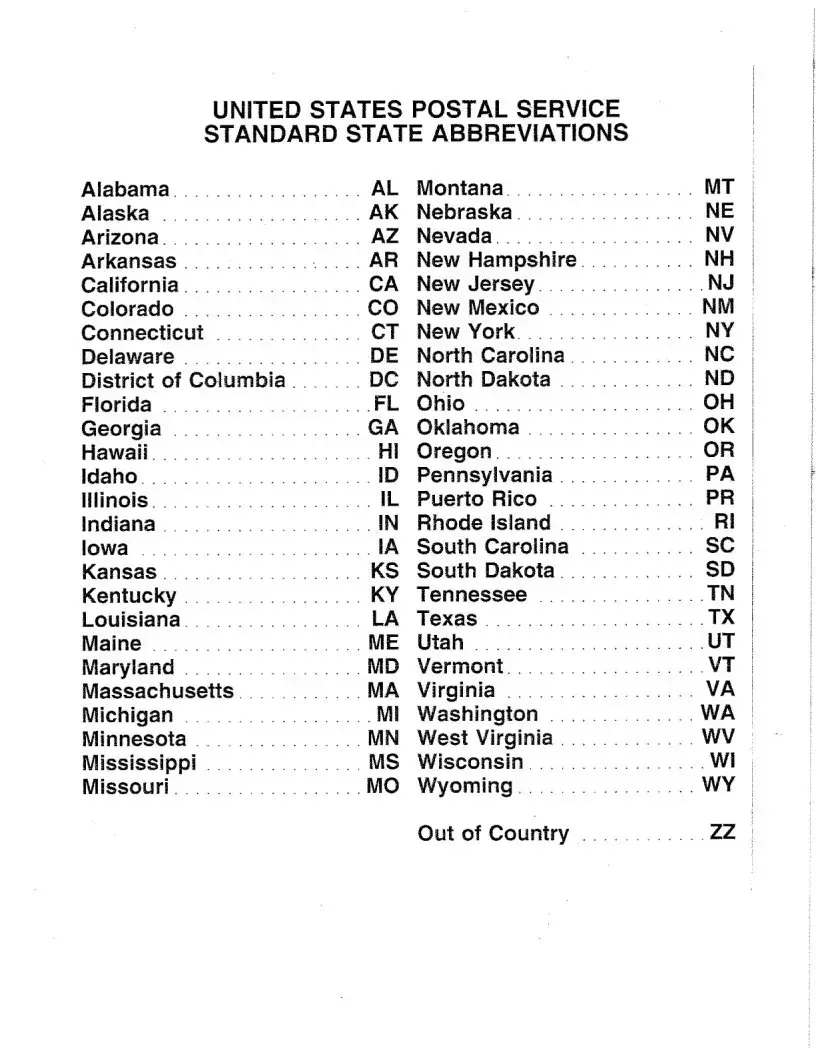What is the Connecticut Uniform Police Accident Report form?
The Connecticut Uniform Police Accident Report form, known as PR-1, is a standardized document used by law enforcement to record details of vehicle accidents. This form captures essential information regarding the accident, including weather conditions, road surface conditions, vehicle types involved, and the nature of injuries sustained. It serves as an official record that can be used for insurance claims and legal proceedings.
Who is required to complete this form?
The form is typically completed by law enforcement officers who respond to the scene of a vehicle accident. Officers gather information from the involved parties, witnesses, and any other relevant sources to ensure an accurate report. In some cases, individuals involved in the accident may also need to provide information for their insurance claims.
What information is included in the report?
The report includes various sections that detail the accident's circumstances. Key sections cover weather conditions, road surface conditions, light conditions, and the specific location of the accident. Additionally, it records the types of vehicles involved, objects struck, and the classification of injuries sustained by individuals. Each section is designed to provide a comprehensive overview of the incident.
How can I obtain a copy of the report?
Individuals involved in the accident or their insurance representatives can request a copy of the Connecticut Uniform Police Accident Report from the law enforcement agency that filed the report. There may be a nominal fee for obtaining a copy, and requests can often be made in person, by mail, or sometimes online, depending on the agency's policies.
What should I do if the information on the report is incorrect?
If you notice any inaccuracies in the report, it is essential to address them promptly. Contact the law enforcement agency that completed the report to discuss the discrepancies. You may be required to provide evidence or documentation to support your claim for corrections. It is crucial to ensure that the report accurately reflects the details of the accident for insurance and legal purposes.
Is this report used for insurance claims?
Yes, the Connecticut Uniform Police Accident Report is often used in the insurance claims process. Insurance companies typically require a copy of the report to assess liability and determine coverage for damages and injuries. The detailed information contained in the report can significantly impact the outcome of a claim.
Are there any penalties for not filing this report?
Failure to file a report when required can lead to penalties. In Connecticut, if an accident results in injury, death, or property damage exceeding a certain threshold, law enforcement is mandated to complete the report. Not filing or providing inaccurate information can result in fines or complications with insurance claims.
How long does it take for the report to be processed?
The processing time for the Connecticut Uniform Police Accident Report can vary depending on the law enforcement agency. Typically, reports are available within a few days to a few weeks after the accident. However, delays may occur due to the complexity of the incident or the volume of reports being processed. It is advisable to check with the specific agency for more accurate timelines.
